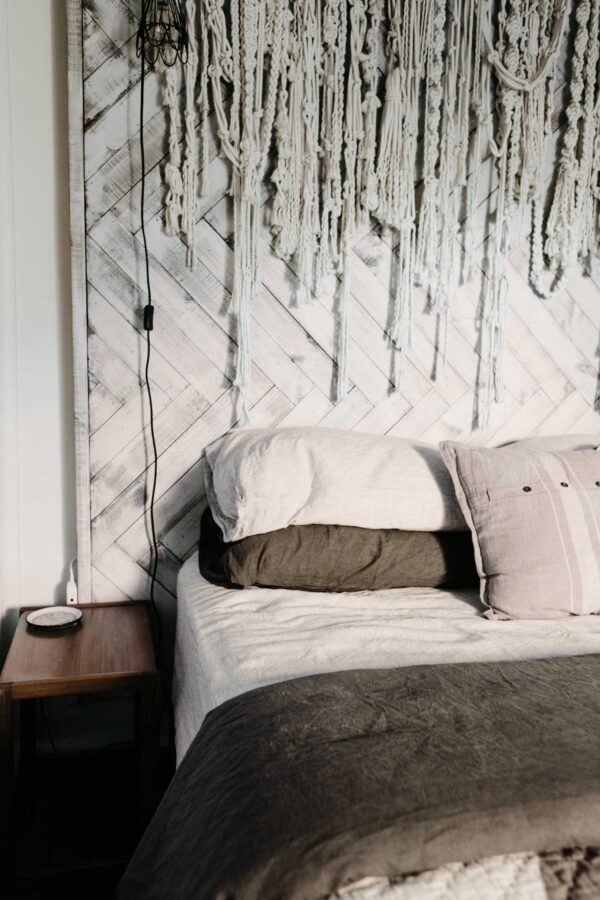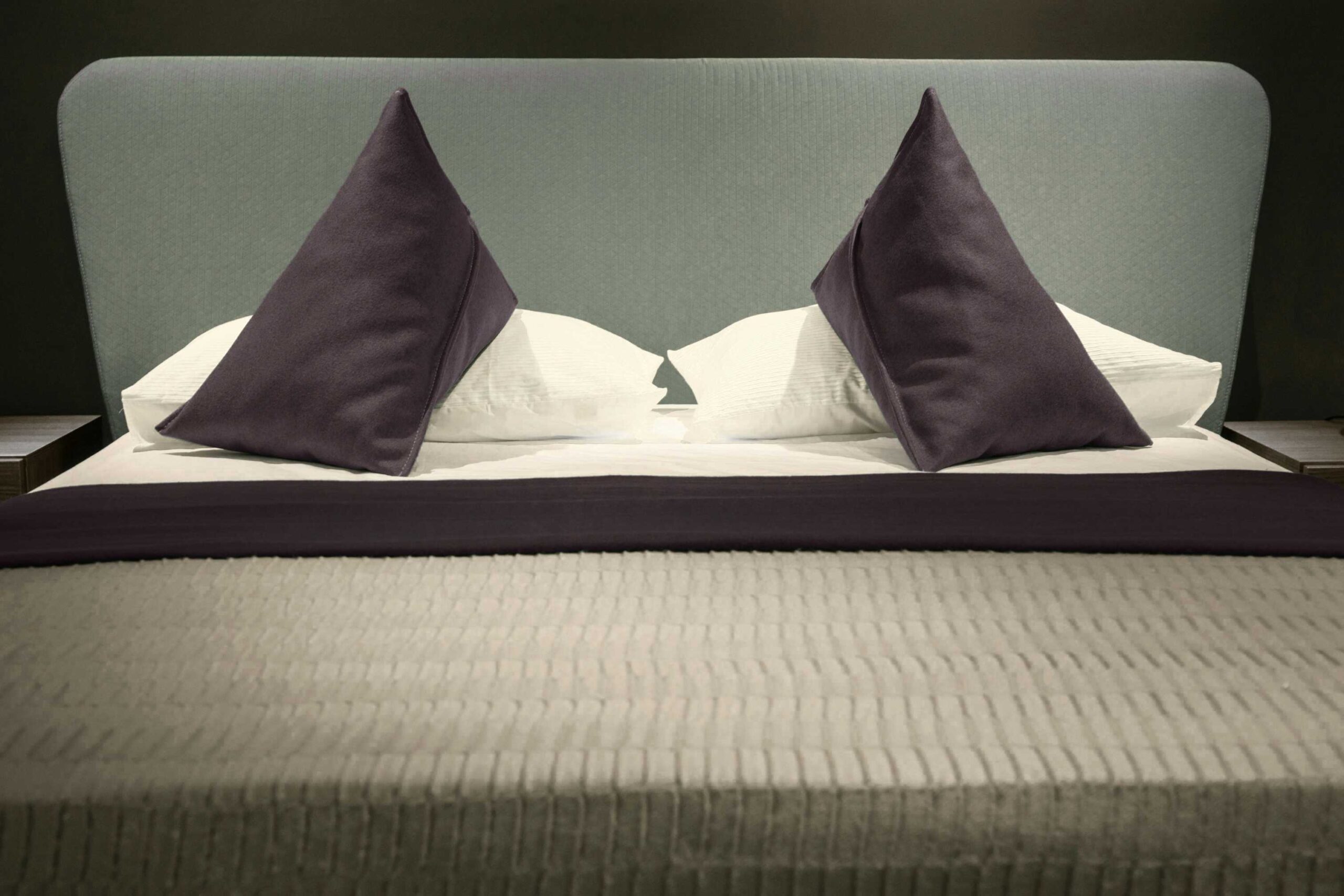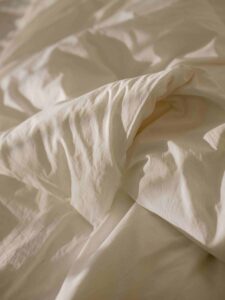Sleep is one of the most vital yet often overlooked aspects of our health. We spend about a third of our lives asleep, yet many of us don’t give much thought to what we’re sleeping on. The right bedding—sheets, pillows, mattresses, and even blankets—can make the difference between waking up refreshed or feeling like you barely slept at all.
In this deep dive into the science of sleep, we’ll explore how your bedding choices impact rest, the best materials for different sleepers, and practical tips to optimize your sleep environment.
Why Bedding Matters for Sleep Quality

Before we get into the specifics of materials and designs, it’s important to understand why bedding plays such a crucial role in sleep quality.
1. Temperature Regulation
Your body’s core temperature naturally drops as you fall asleep. If your bedding traps too much heat or doesn’t insulate enough, it can disrupt this process, leading to frequent awakenings or difficulty falling asleep.
2. Pressure Relief & Spinal Alignment
A mattress that’s too firm or too soft can cause back pain by misaligning your spine. Similarly, the wrong pillow can strain your neck. Proper support is essential for deep, uninterrupted sleep.
3. Allergen Control
Dust mites, pet dander, and mold can accumulate in old or low-quality bedding, triggering allergies that disrupt sleep. Hypoallergenic materials can make a big difference for sensitive sleepers.
4. Psychological Comfort
There’s a reason we love soft, cozy blankets—comfort directly affects relaxation. The tactile sensation of high-quality bedding can signal to your brain that it’s time to wind down.
Now, let’s break down each component of bedding and how to choose the best options for better sleep.
Mattresses: The Foundation of Good Sleep

Your mattress is the most critical part of your sleep setup. A bad one can lead to aches, poor sleep, and even long-term posture issues.
Types of Mattresses
1. Memory Foam
- Pros: Contours to the body, relieves pressure points, reduces motion transfer (great for couples).
- Cons: Can trap heat; some people dislike the “sinking” feeling.
2. Innerspring
- Pros: Firm support, good airflow (cooler sleep).
- Cons: Can sag over time; motion transfer is higher.
3. Latex
- Pros: Durable, responsive, naturally hypoallergenic and cooling.
- Cons: Expensive; heavier than other types.
4. Hybrid
- Pros: Combines support of springs with comfort of foam/latex.
- Cons: Can be pricey; may still sleep warm.
Choosing the Right Firmness
- Side sleepers: Softer to medium (to cushion hips and shoulders).
- Back sleepers: Medium-firm (to support the spine).
- Stomach sleepers: Firm (to prevent lower back strain).
Pro Tip: Most mattresses last 7-10 years. If yours is sagging or causing pain, it’s time for a replacement.
Pillows: Neck Support Matters

A good pillow keeps your head and neck aligned with your spine. The wrong one can lead to stiffness or even chronic pain.
Types of Pillows
1. Down/Feather
- Pros: Soft, moldable, breathable.
- Cons: Loses shape over time; not ideal for allergy sufferers.
2. Memory Foam
- Pros: Contours to your head and neck.
- Cons: Can retain heat; some find it too firm.
3. Latex
- Pros: Supportive, hypoallergenic, durable.
- Cons: Heavier; less “fluff” than down.
4. Buckwheat/Millet
- Pros: Adjustable loft, cooling.
- Cons: Can be noisy; takes getting used to.
Pillow Loft (Height) Guide
- Side sleepers: Higher loft (to fill the gap between head and mattress).
- Back sleepers: Medium loft.
- Stomach sleepers: Low loft (to avoid neck strain).
Sheets: The Secret to Comfort & Temperature Control

Ever wake up sweating or shivering? Your sheets might be the culprit.
Best Sheet Materials
1. Cotton (Especially Long-Staple or Egyptian)
- Pros: Breathable, soft, durable.
- Cons: Wrinkles easily; can be pricey for high-quality versions.
2. Linen
- Pros: Ultra-breathable, gets softer over time.
- Cons: Expensive; wrinkles a lot.
3. Bamboo
- Pros: Silky, moisture-wicking, eco-friendly.
- Cons: Can pill over time.
4. Tencel (Lyocell)
- Pros: Smooth, cooling, sustainable.
- Cons: Less breathable than cotton or linen.
5. Polyester Blends
- Pros: Affordable, wrinkle-resistant.
- Cons: Traps heat; less breathable.
Pro Tip: Thread count isn’t everything. For breathability, opt for 300-500 TC in cotton. Higher counts can feel stifling.
Blankets & Comforters: Weight & Warmth

The right blanket can feel like a hug, while the wrong one can leave you tossing all night.
Types of Blankets
1. Down Comforters
- Pros: Lightweight yet warm, breathable.
- Cons: Expensive; not ideal for allergies.
2. Weighted Blankets
- Pros: Can reduce anxiety and improve sleep.
- Cons: Too heavy for some; can overheat.
3. Wool
- Pros: Naturally temperature-regulating.
- Cons: Can feel scratchy; requires care.
4. Fleece
- Pros: Soft, warm, affordable.
- Cons: Traps heat; not breathable.
Pro Tip: Layering lighter blankets lets you adjust warmth as needed.
Final Tips for Optimizing Your Bedding
- Wash Sheets Weekly – Reduces allergens and keeps them fresh.
- Rotate Your Mattress – Prevents sagging.
- Replace Pillows Every 1-2 Years – They collect dust mites and lose support.
- Try a Mattress Topper – An affordable way to adjust firmness.
- Keep It Cool – Ideal sleep temperature is around 65°F (18°C).
Conclusion: Invest in Better Sleep
Your bedding isn’t just about aesthetics—it’s a key player in sleep quality. The right mattress, pillow, and sheets can mean the difference between restless nights and waking up truly refreshed.
If you’ve been struggling with poor sleep, take a look at your bedding. Sometimes, a simple upgrade is all it takes to transform your rest.
Now, go fluff those pillows and sleep tight!
What’s your favorite type of bedding? Share your sleep setup in the comments!











Add comment